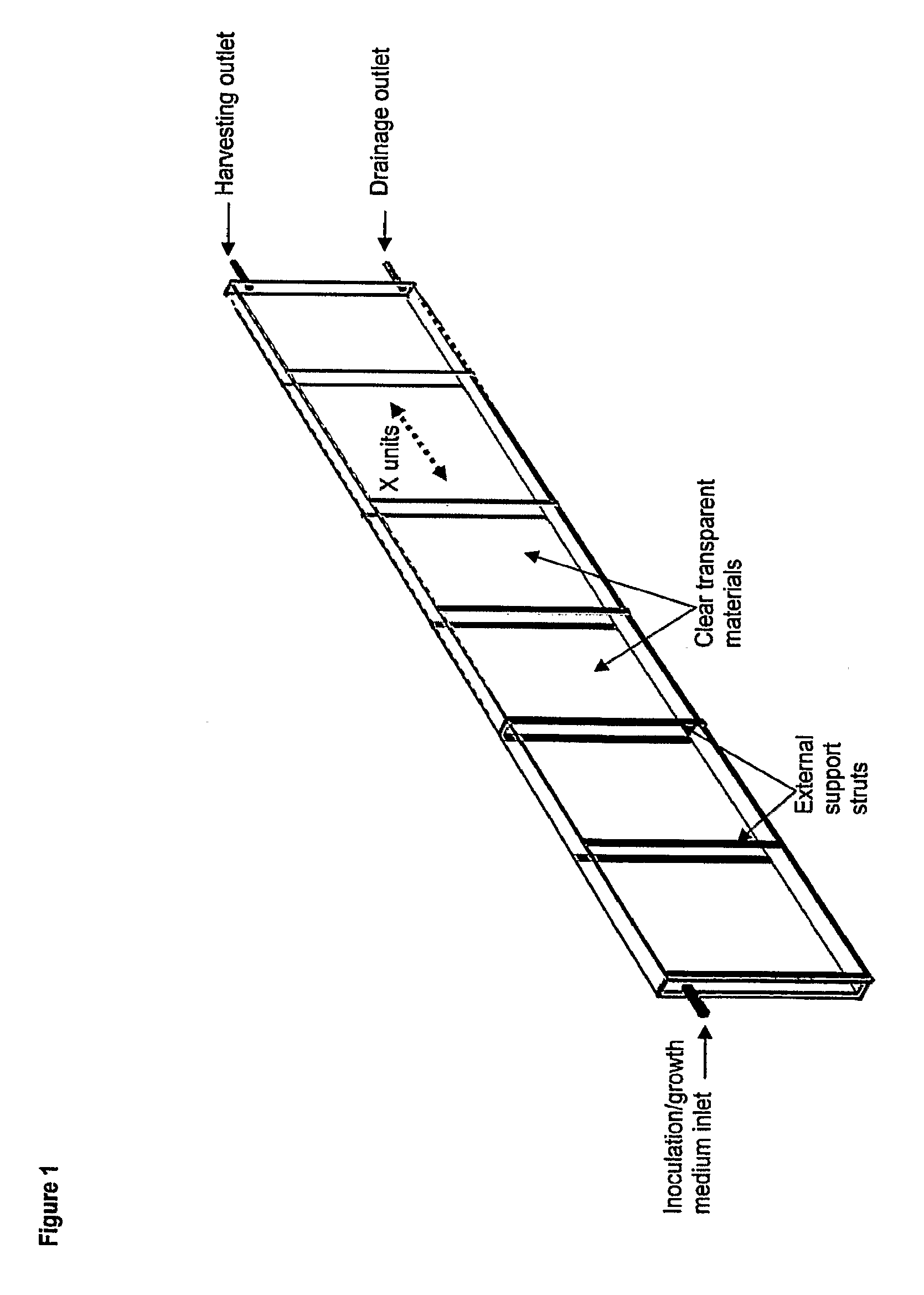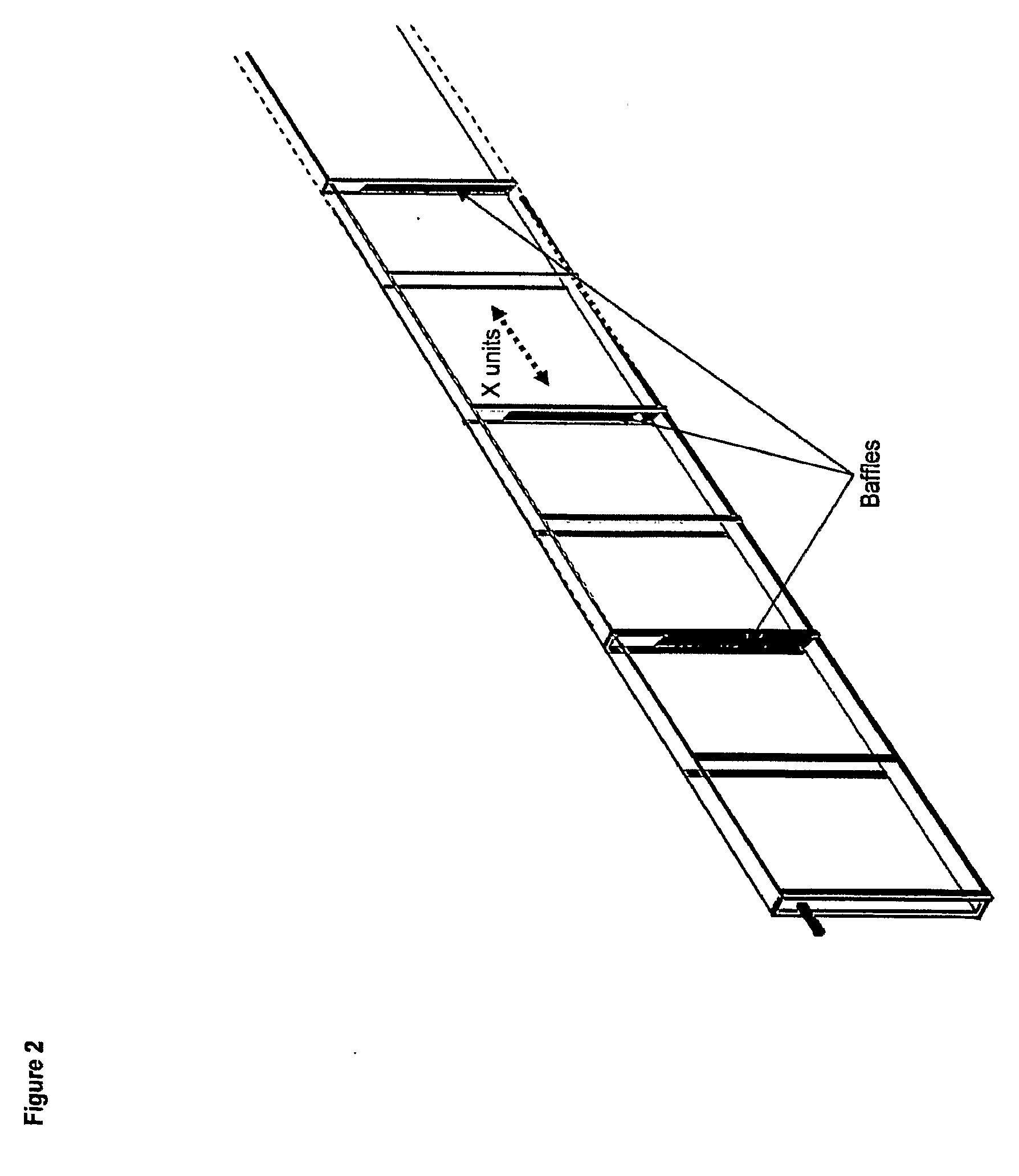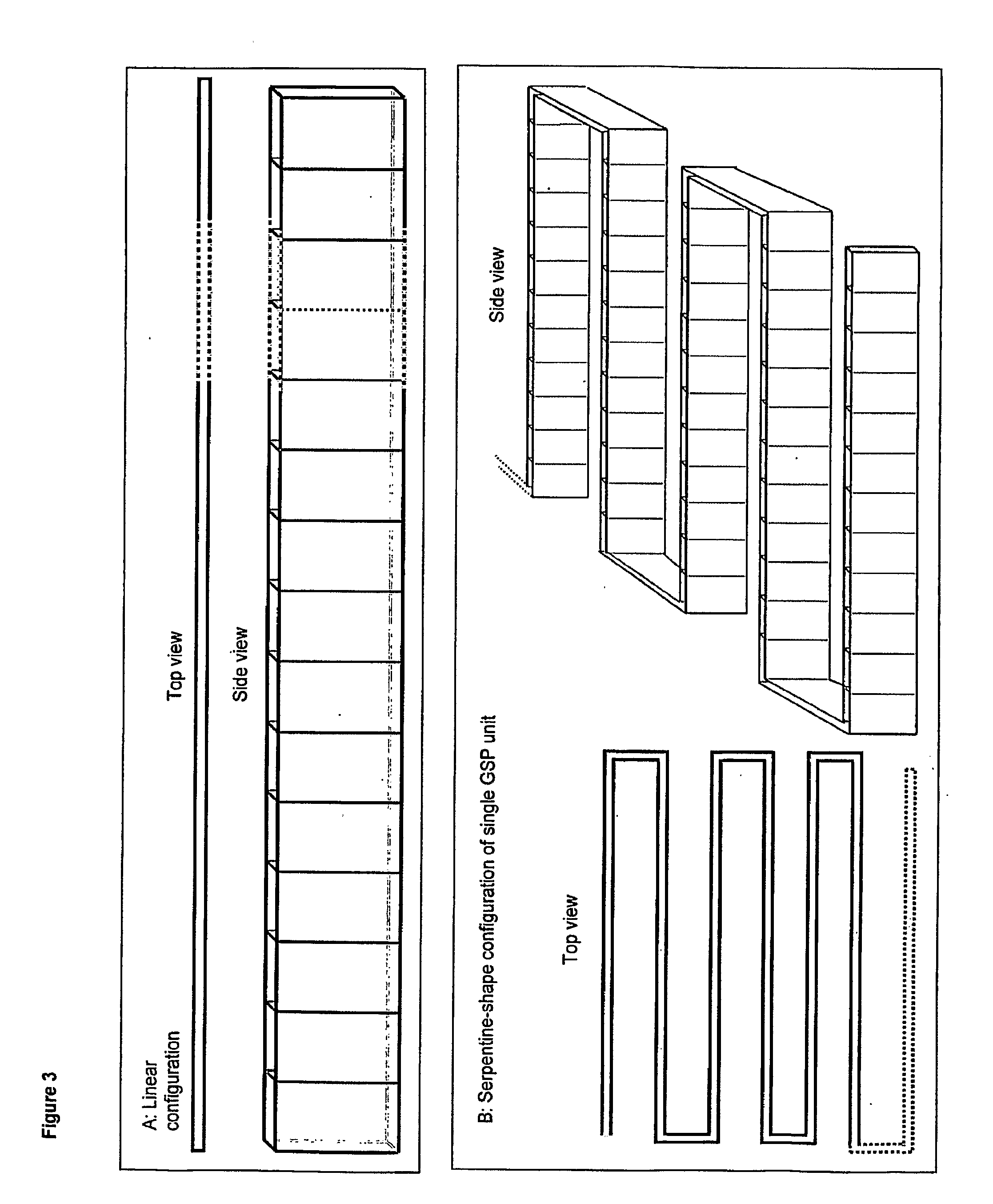Photobioreactor and uses therefor
a photobioreactor and photobioreactor technology, applied in biomass after-treatment, specific use bioreactors/fermenters, microorganisms, etc., can solve the problems of tubular-type photobioreactors suffering from their own inherit problems, low overall productivity of open raceways,
- Summary
- Abstract
- Description
- Claims
- Application Information
AI Technical Summary
Benefits of technology
Problems solved by technology
Method used
Image
Examples
Embodiment Construction
[0056]In a first aspect, the present invention provides a photobioreactor comprising:
[0057](a) a container adapted for holding fluid, comprising[0058](i) opposing first and second sidewalls, wherein at least one of the first and second sidewalls is transparent;[0059](ii) opposing first and second endwalls;[0060](v) a container bottom; and[0061](vi) a container cover,[0062]wherein the first and second sidewalls comprise a plurality of separate sections, and wherein the separate sections are in fluid communication;
[0063](b) support struts for connecting the plurality of separate sections of the first and second sidewalls;
[0064](c) at least one inlet port in fluid communication with the container;
[0065](d) at least one outlet port in fluid communication with container;
[0066](e) an aeration system in fluid communication with the container; and
[0067](f) a temperature control system connected to the container so as to control temperature of fluid within the container.
[0068]The photobiorea...
PUM
| Property | Measurement | Unit |
|---|---|---|
| distance | aaaaa | aaaaa |
| distance | aaaaa | aaaaa |
| area | aaaaa | aaaaa |
Abstract
Description
Claims
Application Information
 Login to View More
Login to View More - R&D
- Intellectual Property
- Life Sciences
- Materials
- Tech Scout
- Unparalleled Data Quality
- Higher Quality Content
- 60% Fewer Hallucinations
Browse by: Latest US Patents, China's latest patents, Technical Efficacy Thesaurus, Application Domain, Technology Topic, Popular Technical Reports.
© 2025 PatSnap. All rights reserved.Legal|Privacy policy|Modern Slavery Act Transparency Statement|Sitemap|About US| Contact US: help@patsnap.com



